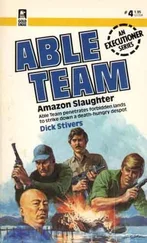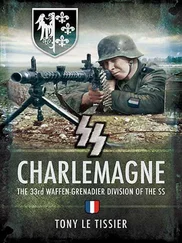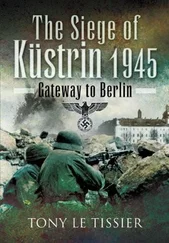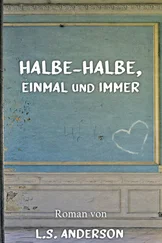Gellermann, Die Armee Wenck , p. 78.
Weidling, ‘Der Todeskampf’, p. 42; Gorlitz, The Memoirs of Field Marshal Keitel , p. 221; Tieke, Das Ende zwischen Oder und Elbe , pp. 216–18. Ryan’s interview notes with Refior, von Dufving Archives.
Weidling, ‘Der Todeskampf’, pp. 42–5; Willemer, p. 19; Tieke, Das Ende zwischen Oder und Elbe , p. 224.
Chuikov, The End of the Third Reich , p. 164; Kuby, The Russians and Berlin 1945 , pp. 52–3. Tieke, Das Ende zwischen Oder und Elbe , p. 201, gives the time of encounter as 0900 hours. Zhukov does not even mention it! According to Koniev’s Year of Victory this was 23 April, but it is quite clear from the accounts of both Zhukov and Chuikov that it must have occurred on the 24th.
Koniev, Year of Victory , p. 131. The new inter-front boundaries followed the main railway lines into Berlin, being clearly discernible to the troops on the ground, however badly damaged the environment, then crossed the Landwehr Canal to the Anhalter railway station. Any extension of that line left the Reichstag clearly to the west and in Koniev’s path. (Here I disagree with both Ryan, The Last Battle , p. 354, and Erickson, The Road to Berlin , p. 586, for the reasons stated.) North of the canal Zhukov could now only approach the Reichstag from the east, north or west. Chuikov’s group, originally intended to cover the whole southern arc of the city, could now, however, concentrate a disproportionately powerful punch on the eastern flank of that arc in competition with the 3rd Guards Tank Army. From then on one suspects that Zhukov must have pushed Chuikov deliberately to block Koniev’s route to the Reichstag, thus causing the forthcoming changes in the inter-front boundary of 28 April with a fait accompli .
Chuikov, The End of the Third Reich , p. 163.
Ibid ., pp. 159–60.
Lakowski/Stich, Der Kessel von Halbe 1945 , p. 50.
Ibid ., p. 53.
Erickson, The Road to Berlin , pp 587–8.
Koniev, Year of Victory , p. 156.
Ibid ., pp. 158, 161; Wagener, The Soviet Air Forces in World War II , p. 350; Erickson, The Road to Berlin , p. 592.
Gellermann, Die Armee Wenck , pp. 78–9.
Koniev, Year of Victory , p. 140.
Chernayev, ‘Some Features of Military Art in the Berlin Operation’, p. 105 .
Zhukov, Reminiscences and Reflections , p. 610.
Fleischer, ‘Der Kessel von Halbe’.
Wilke notes in the hands of the author.
Kortenhaus, Der Einsatz der 21. Panzer-Division , p. 135.
Brand, in the author’s Death Was Our Companion . Ketsin is not identified on maps of this area, but this could be a misspelling of Ketzin, north-west of Potsdam, where the Soviet encirclement of Berlin was completed on 25 April.
Schulze, Der Kessel Halbe–Baruth–Radeland , pp. 18, 20.
Lakowski/Stich, Der Kessel von Halbe 1945 , p. 60.
Ibid ., p. 60 [citing Federal Military Archives RH 19 XV/10, Sheet 332].
GPW, p. 382; Koniev, Year of Victory , p. 172; Toland, The Last Hundred Days , p. 451.
Koniev, Year of Victory , pp. 171–2.
Gellermann, Die Armee Wenck , p. 79.
Kreisleitung Jüterbog booklet, pp. 23–4.
Förster/Lakowski, 1945 – Das Jahr der endgültigen Niederlage der faschistischen Wehrmacht , p. 337.
Lakowski/Stich, Der Kessel von Halbe 1945 , pp. 80, 82 [citing Refior Berlin Diaries, p. 141].
Busse, ‘Die letzte Schlacht der 9. Armee’, p. 167.
Fleischer, ‘Der Kessel von Halbe’. The Il-2 was named Ilyusha after its designer, Sergei V. Ilyushin, and was a ground-attack aircraft armoured with up to 13-mm plate, making it virtually impervious to infantry fire. At this stage of the war it was armed with two 37-mm wing-mounted cannon and two 7.62-mm machine guns in the engine cowling, and could also carry four 82-mm rockets or 100-kg bombs as an external load.
Lakowski/Stich, Der Kessel von Halbe 1945 , pp. 72–9.
Gädtke, Von der Oder zur Elbe , pp. 30–2.
Lakowski/Stich, Der Kessel von halbe 1945 , pp. 95–6 [citing Federal Military Archives RH 19 XV/10, Sheet 296].
Domank, ‘The 1st Guards Breakthrough Artillery Division at Halbe’.
Lakowski/Stich, Der Kessel von Halbe 1945 , pp. 65–6.
Ibid ., pp. 63–6.
The Pe-2 was named Peshka after its designer, Vladimir M. Petlyakov, and was a dive-bomber with a three-man crew, armed with six machine guns and 1,000 kg of bombs.
Von Luck, Gefangener meiner Zeit , pp. 272–3.
Koniev, Year of Victory , p. 168; Lakowski/Stich, Der Kessel von Halbe 1945 , pp. 72–96; von Luck, Gefangener meiner Zeit , pp. 272–6.
Schulze, Der Kessel Halbe–Baruth–Radeland , pp. 54–5.
Lakowski/Stich, Der Kessel von Halbe 1945 , pp. 91–2 [citing Federal Military Archives RH 19 XV/10, Sheet 334].
Ibid ., p. 96 [citing Federal Military Archives RH RH 19 XV/10, Sheet 413].
Förster/Lakowski, 1945 – Das Jahr der endgültigen Niederlage der faschistischen Wehrmacht , p. 338.
Schulze, Der Kessel Halbe–Baruth–Radeland , p. 30.
Kortenhaus, Der Einsatz der 21. Panzer-Division , pp. 139–40.
Lakowsky/Stich, Der Kessel von Halbe 1945 , pp. 92–3.
Busse, ‘Die letzte Schlacht der 9. Armee’, p. 167.
Tieke, Das Ende zwischen Oder und Elbe , p. 192.
Wilke archives.
Wenck, ‘Berlin war nicht mehr zu retten’, p. 64 f.
Wenck, ‘Berlin war nicht mehr zu retten’, pp. 65–6; Gellermann, Die Armee Wenck , pp. 83–7; Tieke, Das Ende zwischen Oder und Elbe , p. 331.
Koniev, Year of Victory , pp. 179–80.
Lakowski/Stich, Der Kessel von Halbe 1945 , p. 66.
Читать дальше












